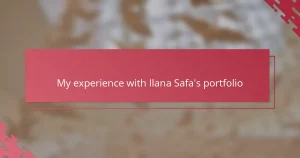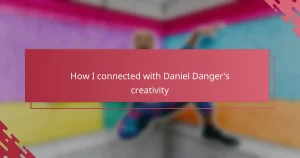Key takeaways
- Illustrator portfolios are crucial for showcasing an artist’s journey, style, and creative evolution, providing insights into their adaptability and emotional connection.
- Collaborating with local artists can be facilitated through personal networks, gallery visits, and social media engagement, emphasizing trust and shared enthusiasm.
- Effective communication and a clear agreement on roles and timelines are essential to smooth collaboration, fostering understanding and respect between partners.
- Sharing responsibilities based on individual strengths enhances creativity and efficiency, with flexibility allowing for spontaneous collaboration when inspiration strikes.
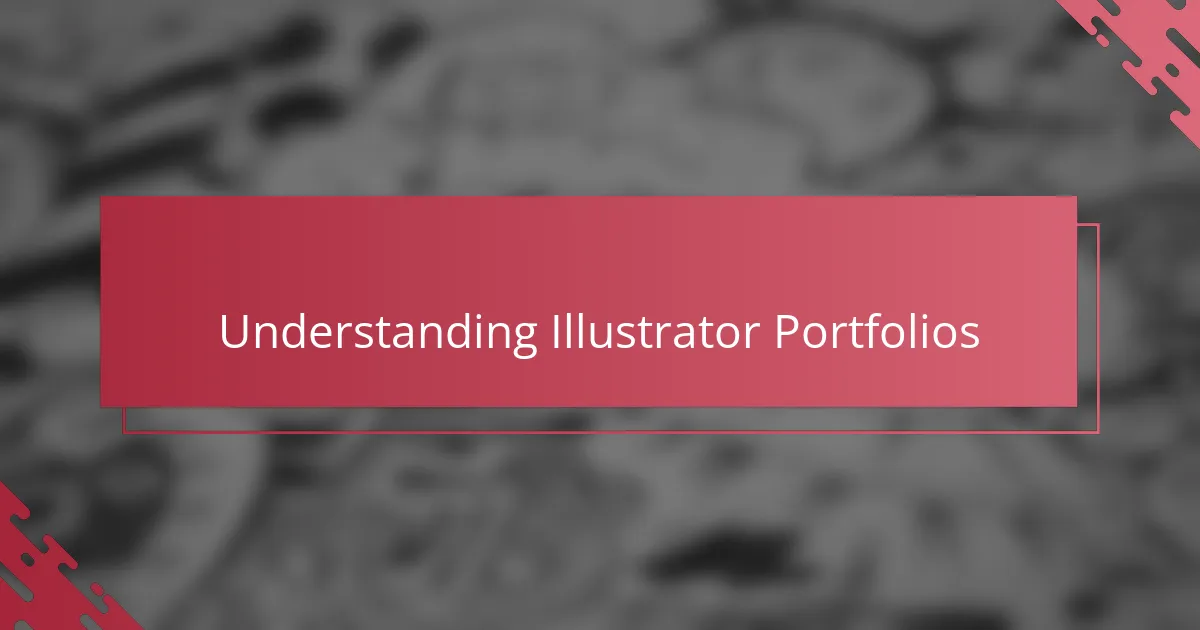
Understanding illustrator portfolios
When I first explored illustrator portfolios, I quickly realized they’re much more than just a collection of images. They tell stories—about an artist’s style, passions, and how they see the world. Have you ever found yourself drawn to a piece not just for its technique but for the emotion it conveys? That’s the power of a well-crafted portfolio.
One thing I noticed is that portfolios aren’t just about showing off skills; they’re a window into the artist’s journey. Each project reveals how they experiment, grow, and respond to challenges. When I reviewed my collaborator’s portfolio, I felt connected to her creative evolution, which helped build trust before we even started working together.
What makes an illustrator portfolio truly stand out? In my experience, it’s the balance between variety and cohesion. Too much diversity can feel scattered, while too little might seem repetitive. Seeing how an artist balances those elements gave me insight into their adaptability—something crucial when collaborating on a unique project.
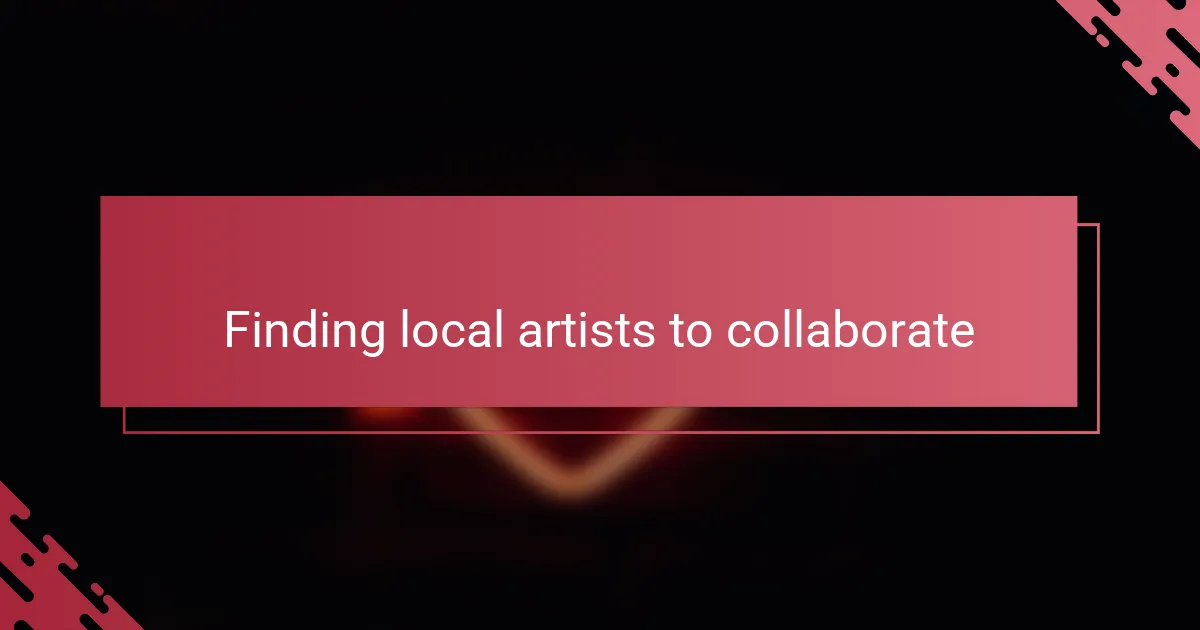
Finding local artists to collaborate
Finding local artists to collaborate with felt like searching for a hidden gem in my own backyard. I started by visiting local galleries and community art fairs, where the energy of creativity was tangible. Have you ever noticed how seeing an artist’s work in person adds a layer of connection that digital images just can’t capture?
I also relied heavily on social media, especially platforms where artists share their portfolios directly. Following local art hashtags and engaging with posts led me to discover talents I might have overlooked otherwise. It was exciting to slide into DMs and start conversations that quickly turned into creative partnerships.
What truly made a difference was asking around in my personal network. Sometimes, the best collaborations come from simple word-of-mouth recommendations. Reaching out to friends and acquaintances exposed me to artists whose work resonated deeply and matched the vision I had in mind. It reminded me that collaboration often begins with trust and shared enthusiasm.
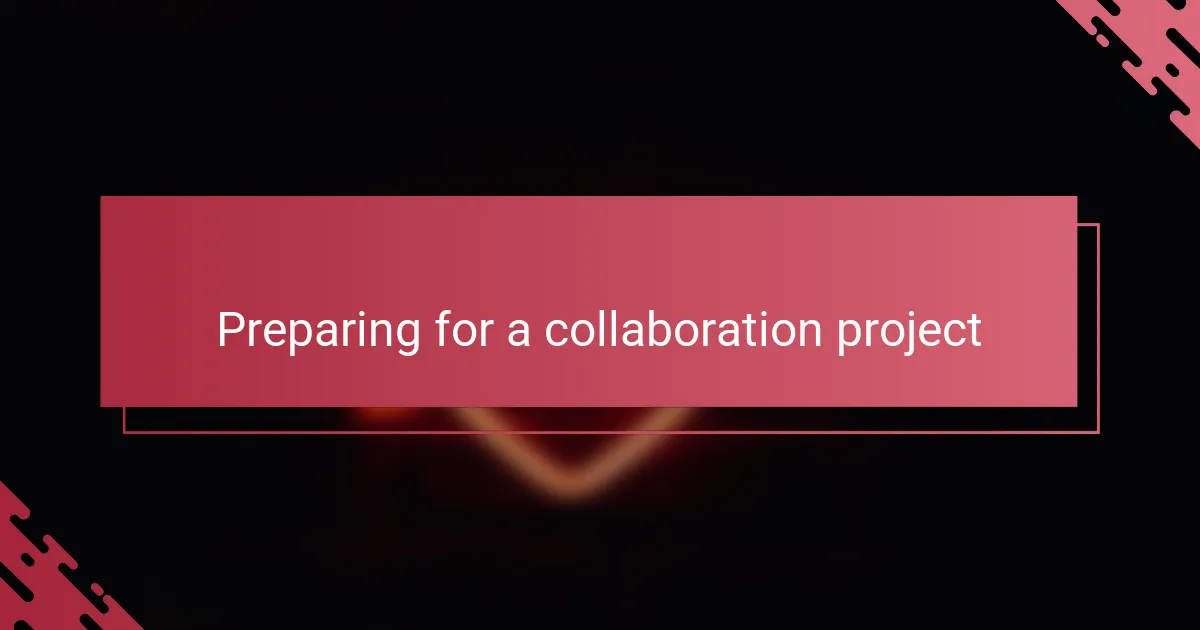
Preparing for a collaboration project
Preparing for a collaboration project meant more than just setting calendars and exchanging emails. I found that having a clear and honest conversation about expectations upfront helped us avoid misunderstandings down the line. Have you ever jumped into a project without clarifying roles, only to realize later that you were both working toward very different goals?
I also took time to review every detail of my collaborator’s portfolio again, not just the highlights but the less obvious works too. Doing this gave me a clearer picture of her strengths and creative boundaries, which made it easier to discuss how we could complement each other’s styles. It became a kind of creative groundwork that set the tone for how we approached the project as partners.
One practical step I never skip is drafting a simple agreement outlining timelines, deliverables, and communication preferences. It might feel formal, but trust me, having that framework saved us from last-minute confusion and kept the process smooth. Preparing like this was key—it transformed what could have been a chaotic experience into an inspiring and well-organized journey.
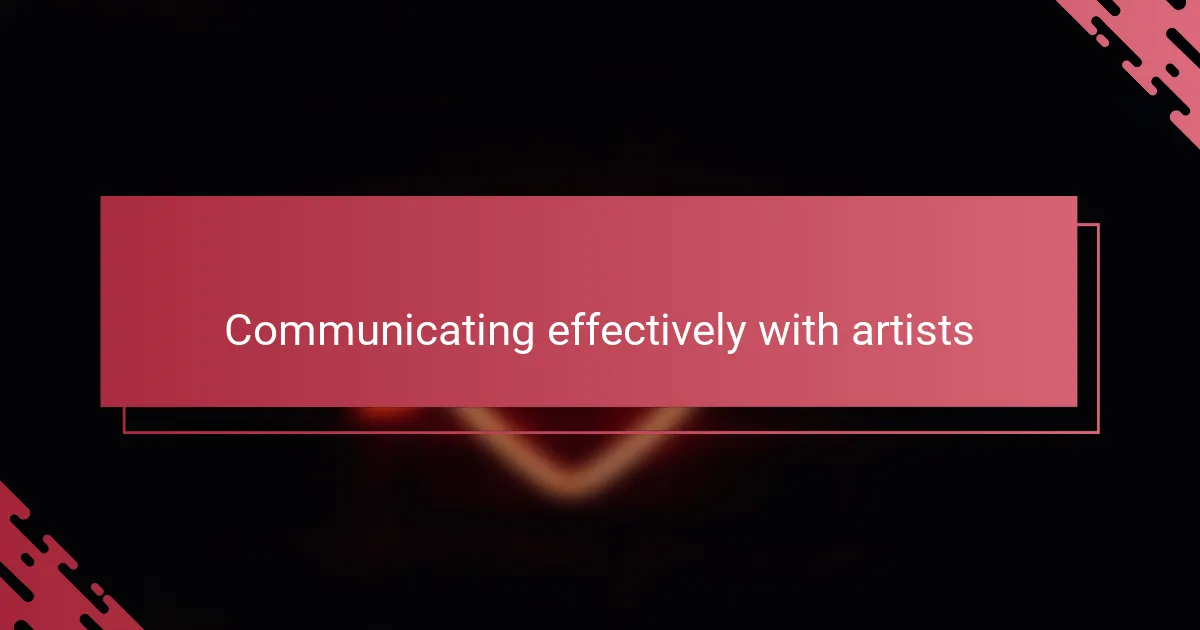
Communicating effectively with artists
Communicating effectively with artists requires more than just exchanging messages; it demands genuine listening. Early in my collaboration, I learned that asking open-ended questions about their creative process opened doors to deeper understanding. Have you ever noticed how a simple question can reveal an artist’s true inspiration and help shape the direction of a project?
Keeping communication clear and consistent was another game-changer. I remember one instance when a quick daily check-in prevented a misunderstanding that could have delayed our timeline. It made me realize that timely feedback not only keeps momentum but also shows respect for the artist’s time and effort.
Lastly, I found that embracing flexibility in communication style made all the difference. While some artists preferred detailed emails, others thrived through casual chats or quick calls. How often do we pause to consider how our collaborator best receives information? Tailoring our approach helps build trust and keeps the creative energy flowing.
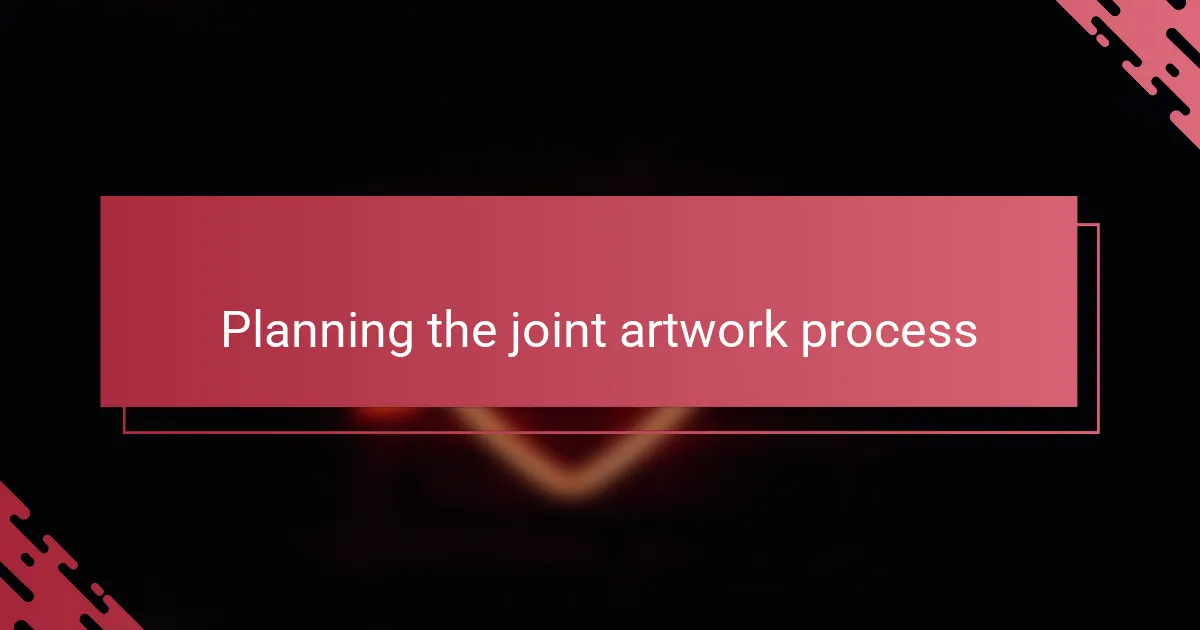
Planning the joint artwork process
Planning the joint artwork process started with mapping out a shared vision and setting clear goals. I asked myself, how do we blend two distinct styles without losing the essence of either? Together, we sketched out initial concepts to find common ground before diving into the details.
I remember we spent hours discussing workflow preferences—would we work simultaneously or take turns? That conversation helped us respect each other’s creative rhythms and prevented clashes later on. It felt like laying down the tracks before the train starts rolling.
Scheduling milestones was another crucial step. We agreed on regular check-ins to keep the project on track and adapt as ideas evolved. Have you ever noticed how a little planning can transform chaos into a fluid creative dance? For us, that structure brought both freedom and focus.
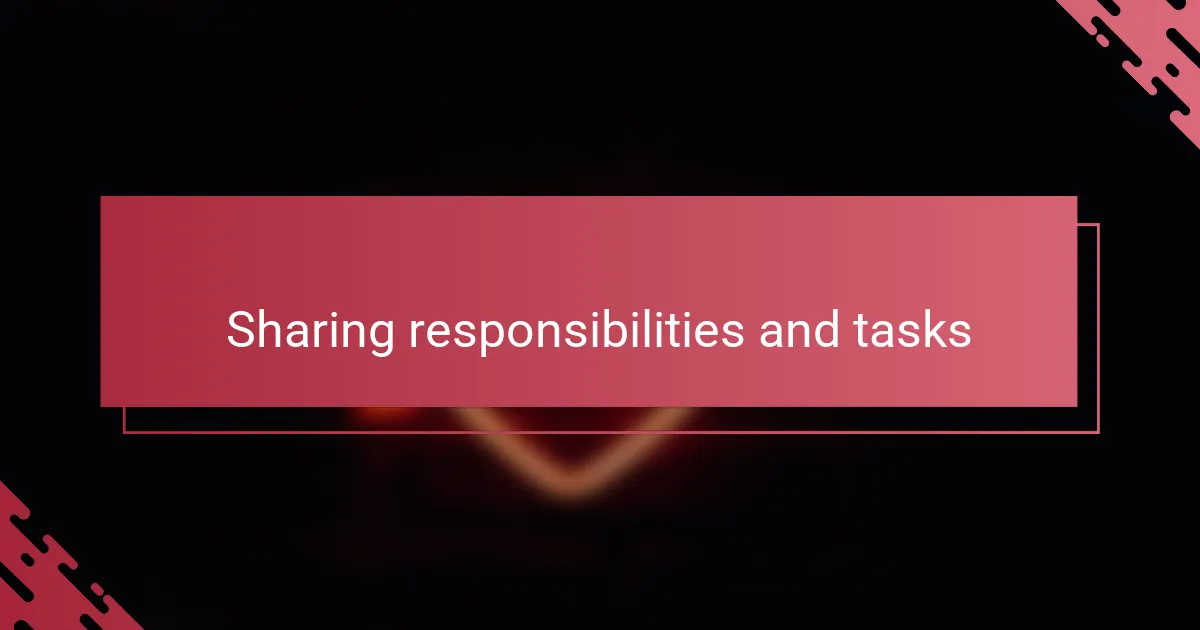
Sharing responsibilities and tasks
Sharing responsibilities and tasks was one of those moments where theory meets reality. I asked myself, “Who’s best suited for what?” rather than splitting work evenly out of convenience. It turned out that playing to each other’s strengths not only sped things up but also made the process more enjoyable.
At one point, I took charge of the storyboard while my collaborator focused on the character designs. This clear division kept us both energized and prevented overlap—like having our own creative lanes yet racing toward the same finish line. Have you ever noticed how clarity in roles can dissolve potential friction before it even starts?
Yet, flexibility remained key. There were times when boundaries blurred because inspiration struck unexpectedly. When that happened, we didn’t hesitate to swap tasks or brainstorm together, reminding me that sharing responsibilities is less about rigid rules and more about a living, breathing partnership.

Showcasing the collaboration results
Seeing the final artwork side by side in our portfolios was a proud moment for both of us. It felt like the perfect blend of two creative worlds—my style intertwined with hers in a way that surprised and delighted me. Have you ever experienced that joy when collaboration breathes new life into your own work?
We decided to showcase the pieces not just online, but also in a small local exhibit. Watching people’s reactions as they moved between our art made me realize how collaboration can amplify impact. It’s one thing to create alone, but sharing the results together made the experience richer and more meaningful.
Reflecting on the feedback we received, I noticed how some viewers connected with the fusion of our styles in unexpected ways. It made me wonder: can collaboration reveal layers of expression we might never find solo? For me, showcasing these results wasn’t just about display—it was about opening a dialogue that continues to inspire.
